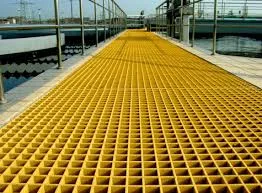
-
 Afrikaans
Afrikaans -
 Albanian
Albanian -
 Amharic
Amharic -
 Arabic
Arabic -
 Armenian
Armenian -
 Azerbaijani
Azerbaijani -
 Basque
Basque -
 Belarusian
Belarusian -
 Bengali
Bengali -
 Bosnian
Bosnian -
 Bulgarian
Bulgarian -
 Catalan
Catalan -
 Cebuano
Cebuano -
 China
China -
 China (Taiwan)
China (Taiwan) -
 Corsican
Corsican -
 Croatian
Croatian -
 Czech
Czech -
 Danish
Danish -
 Dutch
Dutch -
 English
English -
 Esperanto
Esperanto -
 Estonian
Estonian -
 Finnish
Finnish -
 French
French -
 Frisian
Frisian -
 Galician
Galician -
 Georgian
Georgian -
 German
German -
 Greek
Greek -
 Gujarati
Gujarati -
 Haitian Creole
Haitian Creole -
 hausa
hausa -
 hawaiian
hawaiian -
 Hebrew
Hebrew -
 Hindi
Hindi -
 Miao
Miao -
 Hungarian
Hungarian -
 Icelandic
Icelandic -
 igbo
igbo -
 Indonesian
Indonesian -
 irish
irish -
 Italian
Italian -
 Japanese
Japanese -
 Javanese
Javanese -
 Kannada
Kannada -
 kazakh
kazakh -
 Khmer
Khmer -
 Rwandese
Rwandese -
 Korean
Korean -
 Kurdish
Kurdish -
 Kyrgyz
Kyrgyz -
 Lao
Lao -
 Latin
Latin -
 Latvian
Latvian -
 Lithuanian
Lithuanian -
 Luxembourgish
Luxembourgish -
 Macedonian
Macedonian -
 Malgashi
Malgashi -
 Malay
Malay -
 Malayalam
Malayalam -
 Maltese
Maltese -
 Maori
Maori -
 Marathi
Marathi -
 Mongolian
Mongolian -
 Myanmar
Myanmar -
 Nepali
Nepali -
 Norwegian
Norwegian -
 Norwegian
Norwegian -
 Occitan
Occitan -
 Pashto
Pashto -
 Persian
Persian -
 Polish
Polish -
 Portuguese
Portuguese -
 Punjabi
Punjabi -
 Romanian
Romanian -
 Russian
Russian -
 Samoan
Samoan -
 Scottish Gaelic
Scottish Gaelic -
 Serbian
Serbian -
 Sesotho
Sesotho -
 Shona
Shona -
 Sindhi
Sindhi -
 Sinhala
Sinhala -
 Slovak
Slovak -
 Slovenian
Slovenian -
 Somali
Somali -
 Spanish
Spanish -
 Sundanese
Sundanese -
 Swahili
Swahili -
 Swedish
Swedish -
 Tagalog
Tagalog -
 Tajik
Tajik -
 Tamil
Tamil -
 Tatar
Tatar -
 Telugu
Telugu -
 Thai
Thai -
 Turkish
Turkish -
 Turkmen
Turkmen -
 Ukrainian
Ukrainian -
 Urdu
Urdu -
 Uighur
Uighur -
 Uzbek
Uzbek -
 Vietnamese
Vietnamese -
 Welsh
Welsh -
 Bantu
Bantu -
 Yiddish
Yiddish -
 Yoruba
Yoruba -
 Zulu
Zulu
Durable Fiberglass Agitating Tanks for Efficient Mixing and Storage Solutions
Understanding Fiberglass Agitating Tanks Applications and Advantages
Fiberglass agitating tanks are essential components in various industries, predominantly in chemical processing, pharmaceuticals, waste management, and food manufacturing. Their primary function is to mix, blend, or agitate liquids and slurries, ensuring a uniform consistency and homogeneous mixture. The use of fiberglass in constructing these tanks offers several advantages that enhance their performance and longevity.
What is a Fiberglass Agitating Tank?
Fiberglass agitating tanks are vessels made from reinforced plastic material, specifically fiberglass-reinforced plastic (FRP). This material combines the strength and rigidity of glass fibers with the lightweight and corrosion-resistant properties of plastic. Typically, these tanks are equipped with mechanical agitators, which can be either vertical or horizontal, depending on the specific requirements of the process. The agitators help maintain the desired viscosity and dispersion of materials within the tank.
Applications in Various Industries
1. Chemical Processing In the chemical industry, fiberglass agitating tanks are used for mixing chemicals, solutions, and reagents. Their resistance to caustic substances and corrosive materials makes them a preferred choice for handling aggressive chemicals without risk of degradation.
2. Pharmaceuticals In pharmaceutical manufacturing, the need for high purity and stringent hygiene standards is paramount. Fiberglass tanks can be designed to meet these requirements, providing a clean environment that minimizes contamination during the mixing of drugs, solutions, and other compounds.
3. Food and Beverage Production The food industry relies on fiberglass agitating tanks for mixing ingredients to produce sauces, dressings, and other consumables. The non-reactive nature of fiberglass ensures that the quality of food products is maintained, preventing any adverse reactions with the materials being processed.
4. Waste Water Treatment Fiberglass tanks play a crucial role in wastewater treatment systems, where they are used for the agitation of sludge and other waste materials. Their robust design ensures they can withstand harsh operational environments while effectively mixing and aerating the contents.
fiberglass agitating tank

Advantages of Fiberglass Agitating Tanks
1. Corrosion Resistance One of the standout features of fiberglass is its exceptional resistance to corrosion. This makes fiberglass agitating tanks ideal for handling liquids and slurries that are aggressive or caustic in nature.
2. Lightweight Compared to traditional materials such as steel or concrete, fiberglass is significantly lighter, making handling and installation easier. This characteristic is particularly beneficial for large tanks where weight would be a major concern.
3. Customizability Fiberglass tanks can be manufactured in various shapes and sizes to meet specific operational requirements. This flexibility allows industries to optimize their processes effectively.
4. Durability and Longevity The relatively low maintenance requirement of fiberglass tanks contributes to their longevity. When properly maintained, these tanks can last for many years without the need for frequent replacements.
5. Cost-Effectiveness Although the initial investment might be higher than other materials, the durability, maintenance savings, and operational efficiency of fiberglass agitating tanks often make them a more cost-effective choice over time.
Conclusion
Fiberglass agitating tanks represent a significant advancement in industrial mixing technology. Their versatility, combined with the unique properties of fiberglass, positions them as essential tools across various sectors. As industries continue to seek efficient and reliable solutions, the adoption of these tanks is likely to grow, further highlighting their importance in modern manufacturing processes.









